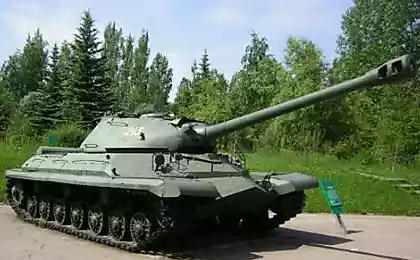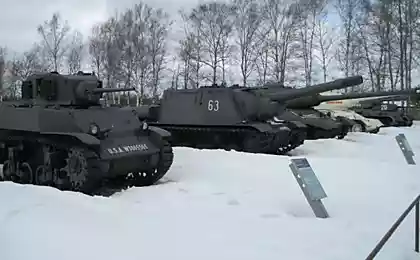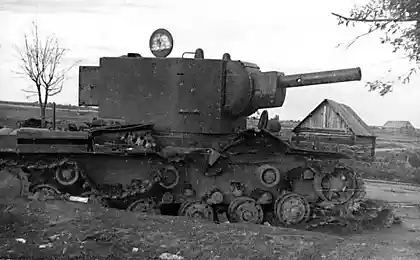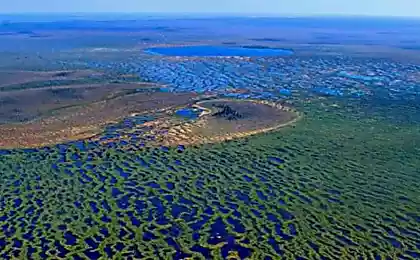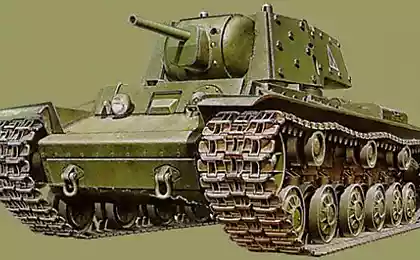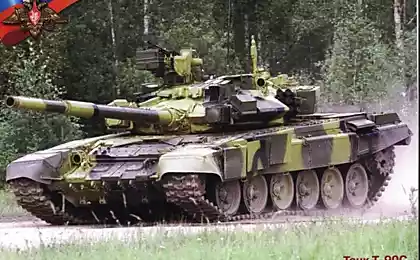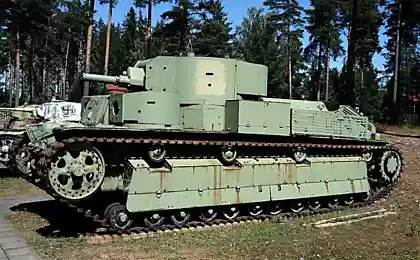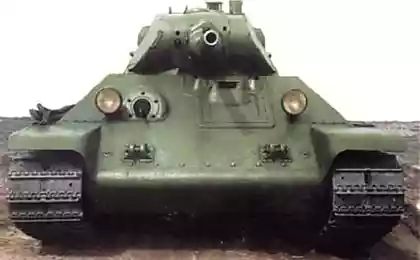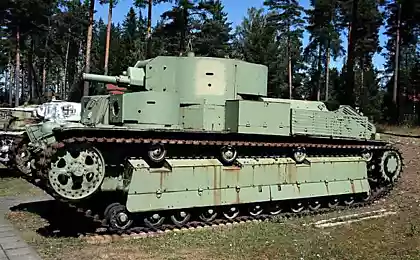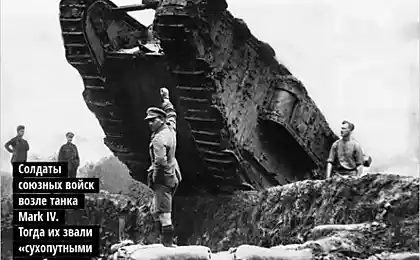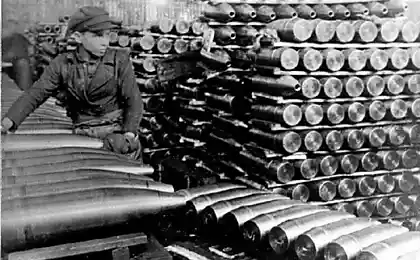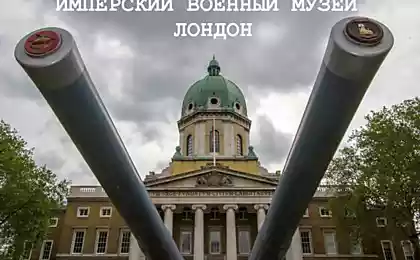709
Tank of the swamp
Russian tank of the Second World War, with German markings was excavated 62 years. It will be interesting to fans of World War II. Even after '62 (a little "twist nuts") failed to start the diesel engine tank.

Bulldozer Komatsu D375A-2 pulled the abandoned tank from its tomb in the swamp near Jõhvi (Johvi), Estonia. Created in the Soviet Union, the tank T34 / 76A resting on the bottom of the lake 56 years. Specifications: weight - 27 tons, the maximum speed - 53 km / h.
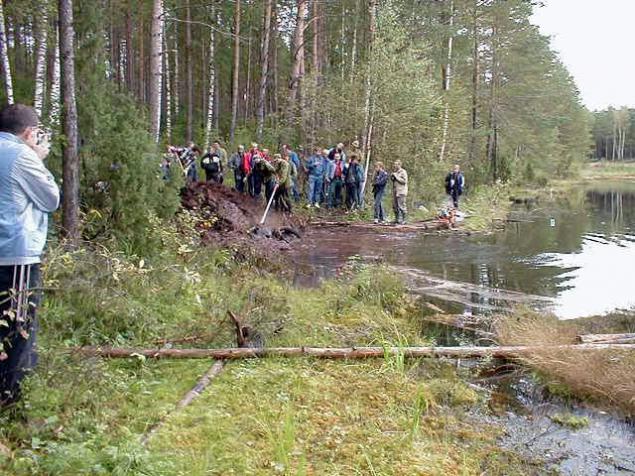
From February to September 1944, heavy fighting on the narrow (50 km wide) Narva (Narva) front in the north-eastern part of Estonia. Around 100, 000 people were killed and 300 000 injured. During the fighting in the summer of 1944, the tank was captured by the German army. (It is for this reason, the tanks were German marking). September 19, 1944, the Germans began to retreat along the Narva front line. There is a suspicion that the tank is specially thrown into the lake to hide it when the kidnappers left the area.
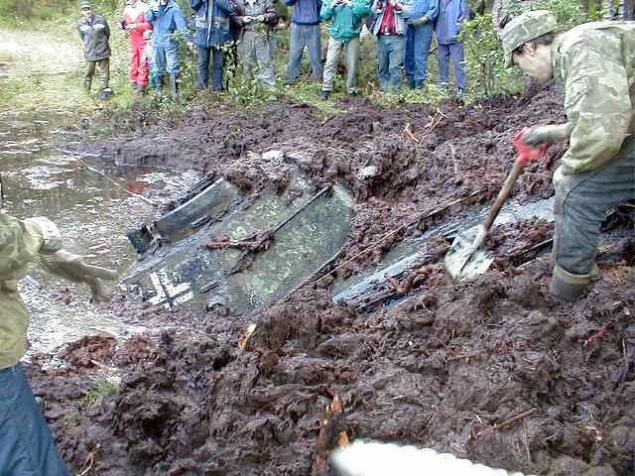
At this time, a local boy Kurtna Matasjarv, walking along the lake shore, saw traces of tank tracks leading into the lake, but never go out. Within 2 months, he watched the rising bubbles of air. On this basis he decided that at the bottom is an armored vehicle. A few years ago, he told the story to the head of military history club «Otsing». Together with its soklubnikami, Shedunov Igor (Igor Shedunov), about a year ago started a diving expedition to the bottom of the lake. At a depth of 7-meters they discovered the tank is under 3mya meters of peat.

Enthusiasts from the club, under the leadership of Shedunova, decided to pull the tank. In September 2000, they turned to Alexander Borovkovte (Aleksander Borovkovthe), manager of the company AS Eesti Polevkivi in Narva (Narva), on the lease of a bulldozer Komatsu D375A-2. (This was a bulldozer in 1995 release, and has gained 19, 000 hours, without major repairs).

The operation to extract the tank began at 9 am and continued up to 15 hours, taking into account several technical breaks. The weight of the tank, in combination with the angle of inclination of the shore, demanding considerable effort. D375A-2 bulldozer cranked all with power and style. Curb weight of the tank was around 30 tons, so that the force required to retrieve it was appropriate. The main requirement 68mi tonnomu bulldozer was having enough of its own weight in order to prevent slipping back into the tank while driving uphill.
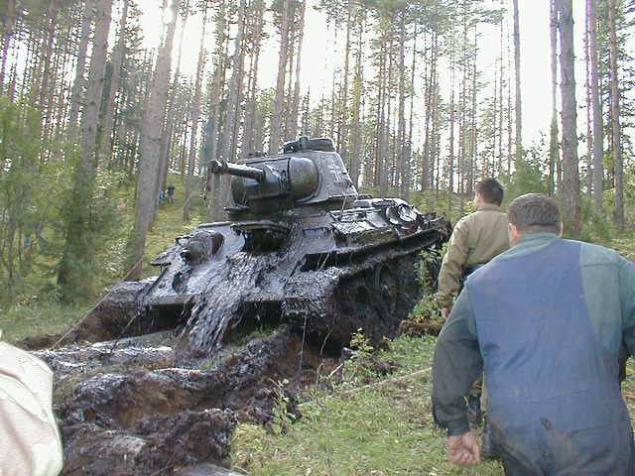
After removing the tank to the surface, it was found out that this is one of the "captured tanks", captured by German forces during the Battle of the Blue Mountains (Sinimaed), 6 weeks prior to its sinking. On the side of the tank has been found, in total, 116 projectiles. It is noteworthy that the tank was in good condition, no rust, and all systems (except the engine) were in working condition. This is a very rare car, given that she had to fight for both, the German and Russian sides. It is planned to fully restore the tank. It will be exhibited at the Museum of Military History in the village Gorodenco (Gorodenko), on the left bank of the River Narva (Narv).
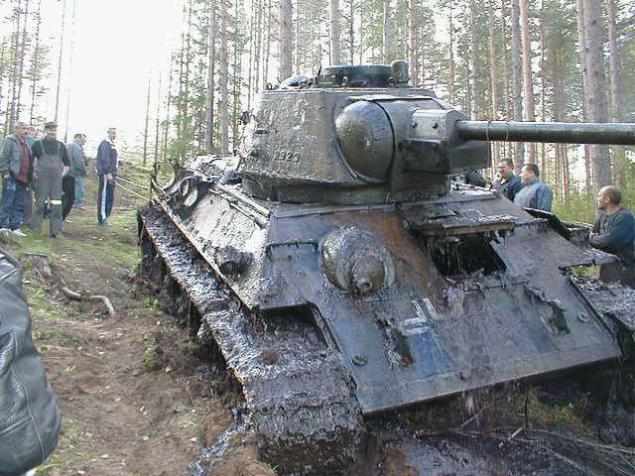
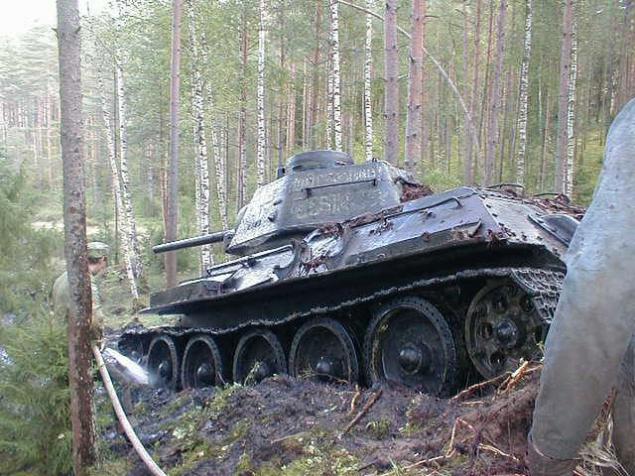
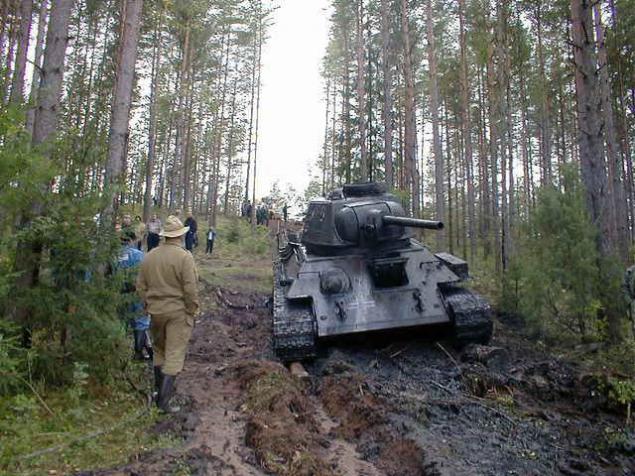
Source: dymontiger.livejournal.com

Bulldozer Komatsu D375A-2 pulled the abandoned tank from its tomb in the swamp near Jõhvi (Johvi), Estonia. Created in the Soviet Union, the tank T34 / 76A resting on the bottom of the lake 56 years. Specifications: weight - 27 tons, the maximum speed - 53 km / h.

From February to September 1944, heavy fighting on the narrow (50 km wide) Narva (Narva) front in the north-eastern part of Estonia. Around 100, 000 people were killed and 300 000 injured. During the fighting in the summer of 1944, the tank was captured by the German army. (It is for this reason, the tanks were German marking). September 19, 1944, the Germans began to retreat along the Narva front line. There is a suspicion that the tank is specially thrown into the lake to hide it when the kidnappers left the area.

At this time, a local boy Kurtna Matasjarv, walking along the lake shore, saw traces of tank tracks leading into the lake, but never go out. Within 2 months, he watched the rising bubbles of air. On this basis he decided that at the bottom is an armored vehicle. A few years ago, he told the story to the head of military history club «Otsing». Together with its soklubnikami, Shedunov Igor (Igor Shedunov), about a year ago started a diving expedition to the bottom of the lake. At a depth of 7-meters they discovered the tank is under 3mya meters of peat.

Enthusiasts from the club, under the leadership of Shedunova, decided to pull the tank. In September 2000, they turned to Alexander Borovkovte (Aleksander Borovkovthe), manager of the company AS Eesti Polevkivi in Narva (Narva), on the lease of a bulldozer Komatsu D375A-2. (This was a bulldozer in 1995 release, and has gained 19, 000 hours, without major repairs).

The operation to extract the tank began at 9 am and continued up to 15 hours, taking into account several technical breaks. The weight of the tank, in combination with the angle of inclination of the shore, demanding considerable effort. D375A-2 bulldozer cranked all with power and style. Curb weight of the tank was around 30 tons, so that the force required to retrieve it was appropriate. The main requirement 68mi tonnomu bulldozer was having enough of its own weight in order to prevent slipping back into the tank while driving uphill.

After removing the tank to the surface, it was found out that this is one of the "captured tanks", captured by German forces during the Battle of the Blue Mountains (Sinimaed), 6 weeks prior to its sinking. On the side of the tank has been found, in total, 116 projectiles. It is noteworthy that the tank was in good condition, no rust, and all systems (except the engine) were in working condition. This is a very rare car, given that she had to fight for both, the German and Russian sides. It is planned to fully restore the tank. It will be exhibited at the Museum of Military History in the village Gorodenco (Gorodenko), on the left bank of the River Narva (Narv).



Source: dymontiger.livejournal.com
